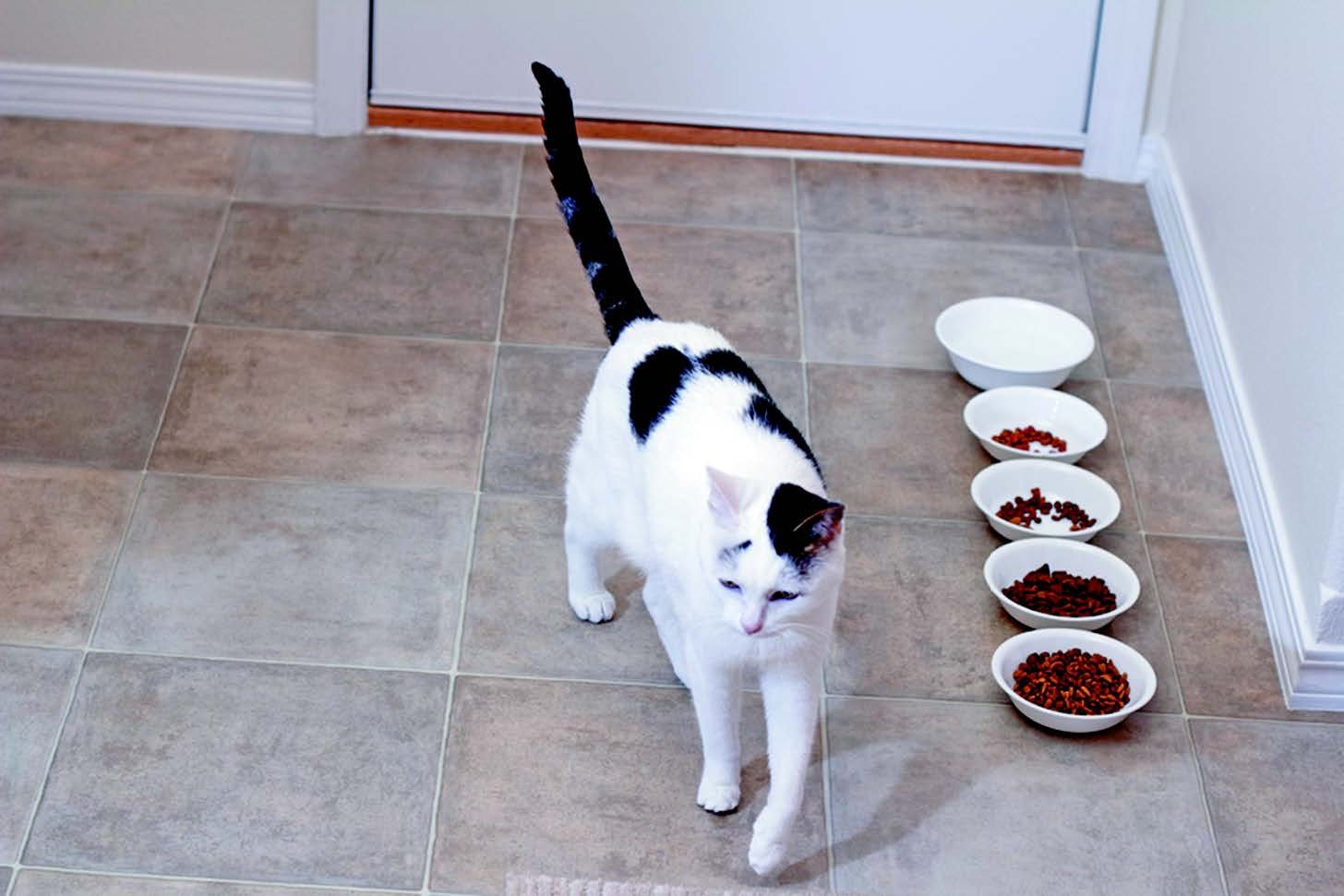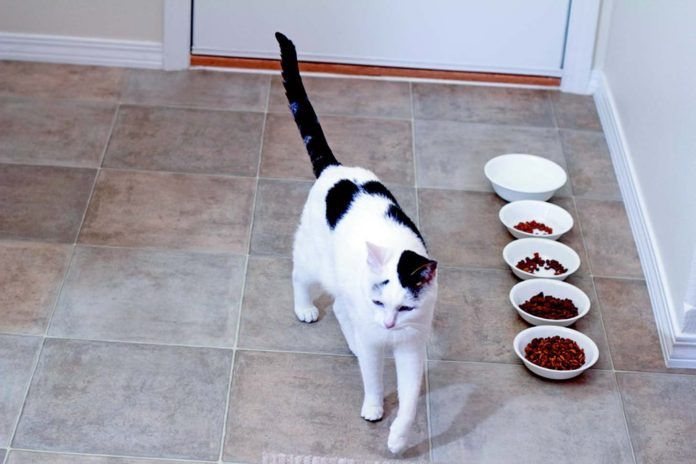
© Serenethos | Bigstock
Cats in general are happy to eat the same food day after day, say the veterinary nutritionists at the Tufts Cummings School of Veterinary Medicine. However, owners can inadvertently give their cats an opening to train them into thinking that a lack of variety in the diet is unacceptable.
How does it happen? A lot of times, when you put out the food, your cat may not eat it right away. That leads a lot of owners to start worrying and trying to replace the food in the bowl with something the cat will gobble up on sight. This sequence of events, if practiced with any degree of regularity, sends the cat the clearest message that he has the option of rejecting the perfectly good, nutritious food that you have set before him and holding out for something more delectable — or simply holding out for variety.
And it gets owners confused. They think the cat is showing them that it requires a menu with several options in order to eat well and stay healthy, losing sight of the fact that it is they themselves who triggered their cat’s finicky behavior. So they end up buying several different brands, or flavors, or both, and then spend a lot of time cajoling and fussing in the hope that their pet will take a few bites.
A better bet is to just put out the food and let the cat eat or not as he desires. Indeed, a cat with a sensitive stomach may not do well with frequent dietary changes. If your cat does not eat, or does not eat all of his food one day, that’s okay. The next day, just throw out what you put in the bowl the day before, and start over. Hunger is a very powerful biological drive, one not easily overridden by any desire for variety.
If you do want to offer your cat variety
If despite the fact that your cat will be perfectly fine on just one type of food you decide to switch up his meals here and there because it’s a way in which you want to show you care, just make sure the Statement of Nutritional Adequacy on the label says the food is right for your cat’s stage of life, or “for all life stages.” Otherwise, you can be setting up your pet for nutritional imbalances that could harm his health.
Treats are another way to add some variety to your cat’s diet. But they should make up no more than 10 percent of your cat’s food — and ideally, no more than 5 percent. Since the average cat should be consuming 200 to 250 calories a day to remain at a proper weight, that means no more than 25 calories from treats, and as few as 10 calories. It comes to roughly one to two fluid ounces of skim milk, or a tenth to a quarter of a piece of American cheese.
Cats Whose Diets Should Change — But Not Every Day
In some cases, a change in a cat’s diet is called for — not to create a finicky eater whose meal plan changes day to day but to address a change in health status. Here are the reasons to switch a cat’s diet, with your veterinarian’s oversight.
➤ Periodontal disease. Some cat foods are designed to deal with tartar buildup and gum inflammation.
➤ Pregnancy or lactation. These very critical life stages, when a cat is eating for her unborn or just-born litter, require a diet more dense in nutrients than is usually needed.
➤ Chronic kidney disease. As soon as a cat is diagnosed with this condition, the vet may recommend a diet by prescription that is lower in phosphorus and sodium. When the disease is further along, a diet that contains less protein may also be recommended for the sake of unburdening ailing kidneys.
➤ Urinary tract problems. In these cases, sometimes a switch from dry kibble to canned food (which has much more water) is in order.
➤ Overweight. If a cat is deemed to be too heavy, he may be switched to a diet that has fewer calories for the volume of food, perhaps because of the addition of fiber, which contains no calories whatsoever.




